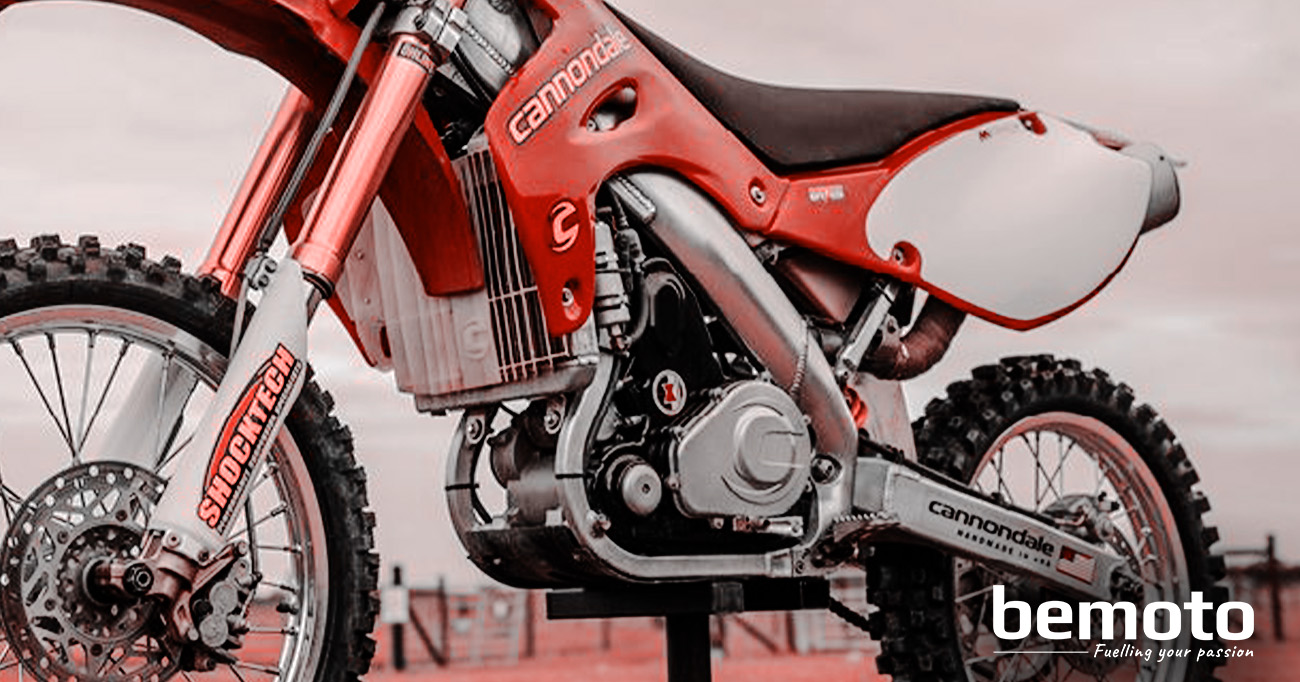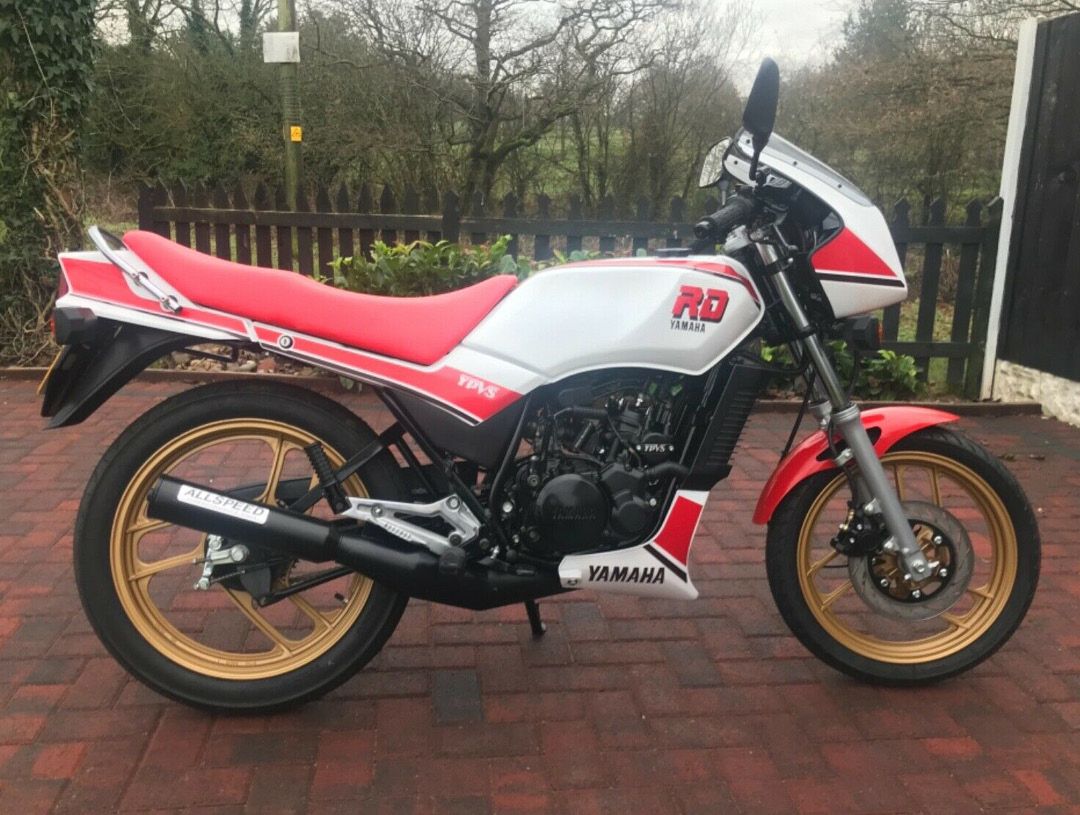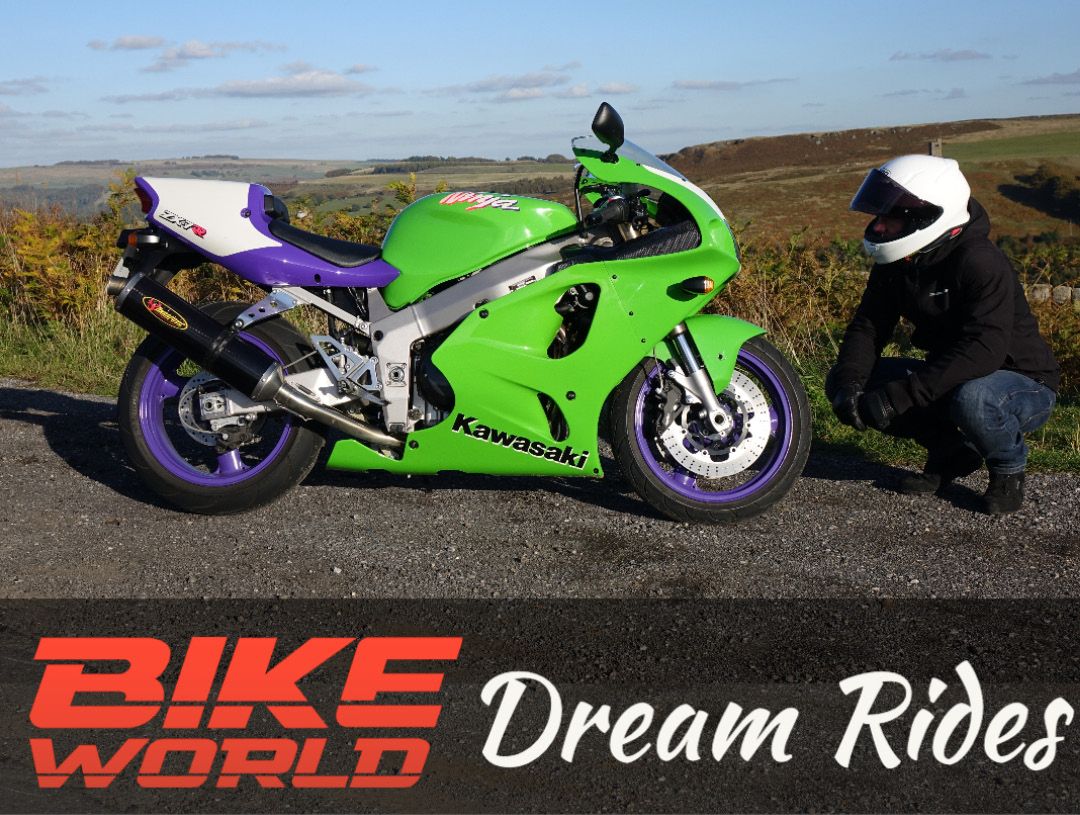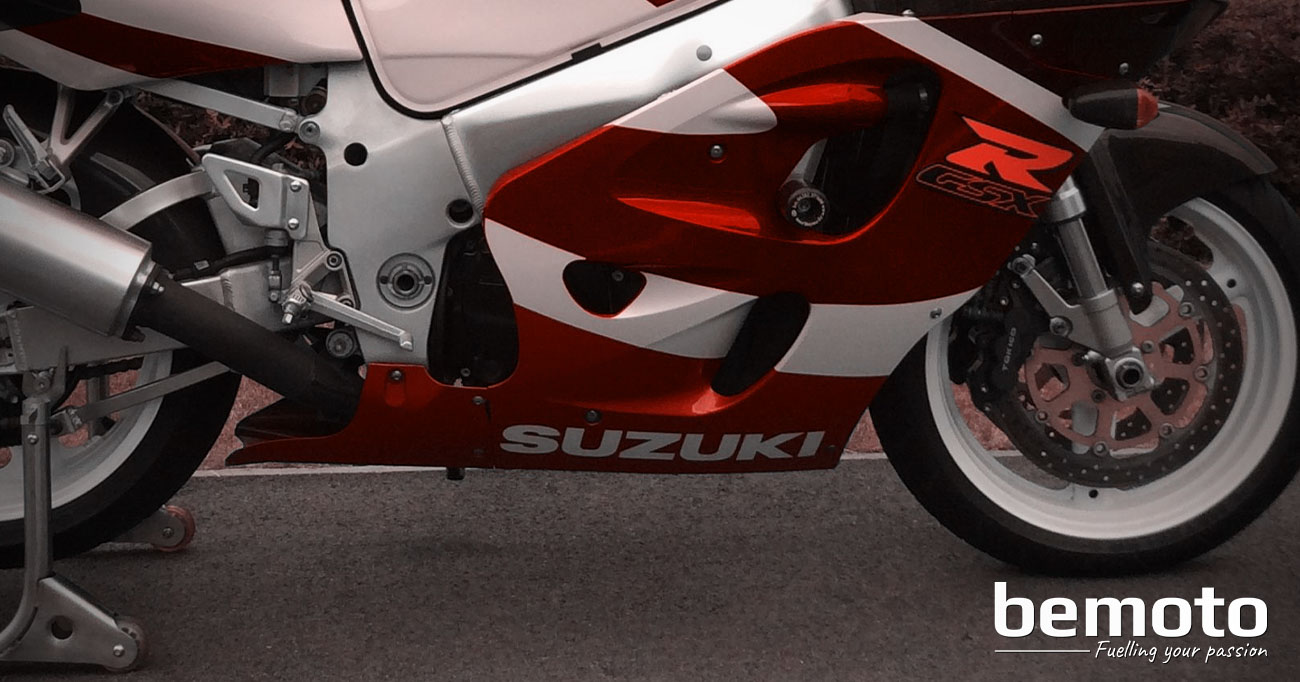The Cannondale MX400 – The Worst Motocross Bike of All Time?
This is the 2001 Cannondale MX400, and by some it is regarded as the worst bike in motocross history.
Which in itself is strange to think about, because this machine – which was created by a well renowned bicycle company – is packed full of super advanced technology and features that are commonplace in the world of off-road racing today. Reversed cylinders, fuel injection and electric starts were all years away from common practice back in the early 2000s, but the Cannondale MX400 pioneered the use of them all.
So what went wrong? Why is this bike – ‘The Great American Hope’ – considered such a failure?
Strap yourselves in for what might well be one of dirt biking’s wildest history lessons… You can also see a video of the bike ridden at the end.
The back story of Cannondale is a weird and winding road
From the beginning Cannondale were seemingly blessed (and cursed) with a deep sense of curiosity and a clear obsession with innovation. From these early days it was also evident that the company was graced with some brilliant workers and bright minds, which helps to explain how this Connecticut based concrete company – yes I said concrete – found themselves at the epicentre of one of the most ferocious hype storms of early 2000s motocross.
The bicycle market was booming in the 1980s, and with the invention of a thing called a Mountain Bike innovation was abundant, and in high demand. So naturally Cannondale soon took the pedal powered world by storm with their revolutionary ideas and unique designs, which of course included the pioneering use of aluminium frames.
By the time the 90s rolled around Cannondale were considered a great American success story, as they continued to triumph both in terms of sales and world titles. By pushing the boundaries with wild and groundbreaking designs Cannondale were considered among the best in the biking business and they became a powerful force filled with confidence. As the 90’s marched on Cannondale noticed a new and alluring opportunity in the dirt bike market, and having already conquered one two-wheeled discipline, they quickly decided to enter the world of motorsport.
The unveiling of the Yamaha YZ400f gave the dirt bike world a real kick up the back side. Change was afoot and revolution was on the doorstep. The release of this
ground-breaking machine also proved to be the perfect carrot for Cannondale to chase and provided them with an open invite to innovate to their heart’s content.
But arguably it was this very quest for continual innovation – which had brought them so much success in the bike game – that ultimately led to their downfall…

The Cannondale MX400
The late 90s were a tumultuous and revolutionary time for motocross manufacturers. Big bore two-strokes were breathing their final breaths, the time of the 500 had passed, and Yamaha’s successful introduction of the YZ400 four stroke completely changed the landscape of the scene and the future of the sport. After Doug Henry piloted the YZ400f to victory at the Las Vegas SX in May 1997 it was abundantly clear that motocross would never be the same again.
At the same time as this power plant revolution aluminium frames were also being introduced to the general dirt biking public. So, in 1998 Cannondale- armed with their decades of aluminium expertise – decided they wanted to join the moto party, and their aim was to fill that four-stroke market gap that Yamaha had just created.
With that decision Cannondale became the first outside brand to join the motocross industry since KTM 25 years earlier and the only mainstream American manufacturer in the market. It was an exciting time for Cannondale and Cannondale fans, but this is when the problems truly started.
After multiple delays it eventually took three long years from the initial announcement and conception for bikes to finally arrive in showrooms, which was plenty of time for an unhealthy amount of hype and an ultimately lethal dose of scepticism to build among the motocross community.
By 2001 the four-stroke boom had truly begun and taken hold of the sport. Both Yamaha and KTM had strong machines in the category, Honda were on the Horizon with the CRF and the rest of the Japanese weren’t far behind them with their own projects. It was quickly going to get crowded in the Thumper class.
Not only did the MX400 take its time to arrive but it also cost Cannondale a dime or two to develop. The company’s original, and maybe naive, budget estimate of $20 million to design and develop a completely new and original motorcycle had ballooned wildly out of control. Meaning that a lot was riding on the success of the MX400, which perhaps explains the aggressive marketing strategy leading up to the launch of the machine. But why did the bike cost so much and take so long to develop? Well, as we’ve said that might well be down to their obsession with innovation.
Upon release the MX400 was packed full of new and original ideas which had never been seen before in the sport. But what that really meant is that these ideas and features had never truly been tried and tested for hardcore dirt bike use. On paper the bike sounded exotic and high end, but in reality it was just plain weird and extremely temperamental.
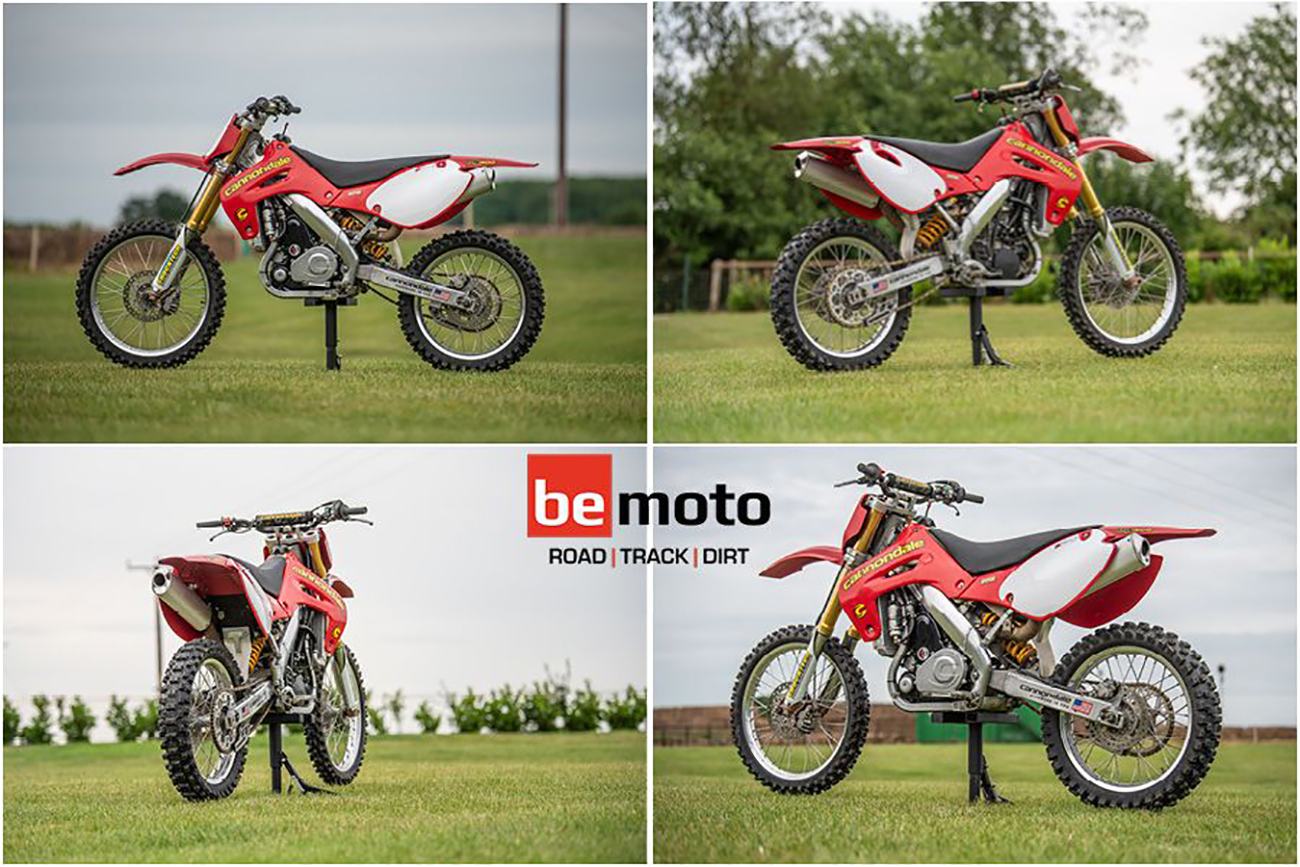
Originally Cannondale were working with a Swedish based engine manufacturer called ‘Folan’ – this was the powerplant used in the early prototype machines- but eventually this relationship disintegrated, and Cannondale decided to start from the ground up with their own motor concept. To achieve this they teamed up with a NASCAR outfit based in North Carolina. It was this complete engine redesign that added so much time (and budget) to the entire process.
The result was way ahead of its time. Yamaha’s marketing machine would have you believe that they re-invented the wheel with their reverse cylinder concept and application that came into effect for the 2010 model YZF bikes. But Cannondale actually beat them to it… by nine years!
The MX400 featured a reversed cylinder concept that was obviously a good idea, but perhaps not quite executed in the most effective way. The exhaust came straight out the back of the cylinder, so the header pipe was very short which does not result in great power whatsoever. The modern Yamaha’s implement a ‘Tornado’ header pipe design to get around this.
Much like the modern Yamaha’s, the Cannondale also features a somewhat unconventional air intake system and air filter placement. The air filter actually sits behind the front number plate in front of a hole in the downtube of the frame that allows air to flow through into the system. However, the Cannondale engineers quickly realised that this intake system simply wasn’t efficient enough. They added a second air box exactly where you’d find a filter on a modern YZ450f. Not only did that mean you had two filters to clean after a day at the track, but this second filter was a complete faff to remove. The seat, rad shrouds and tank all had to come off before you could reach that pesky filter.
The main two futuristic features that Cannondale’s marketing guru’s waxed-lyrical about proved to be by far the most controversial and problematic. Fuel injection technology was totally exotic in the dirt bike world of the late 1990s, and evidently it wasn’t used much for good reason. EFI tech just wasn’t great yet for dirt bike use. The ECU system used on the Cannondale was terrible and the bikes had major fuelling issues. Electric starters were also a few years away from mainstream usage. Battery tech wasn’t quite there yet either, they were viewed as being too bulky and too temperamental, as the Cannondale MX400 helped to prove. Whenever the bike got a little warm the electric starter simply would not do its job. Which was disastrous considering the bike had a habit of stalling out at low RPM on track.
The MX400 was packed full of unique ideas and clever concepts. But overall, the finished product was super difficult to work on and a major pain to live with. This list is too long to go into here but the bike was chock full of weird and bizarre quirks that might have been forgiven in the 1970’s or 80s. But in 2001 people expected a lot more from their machines…
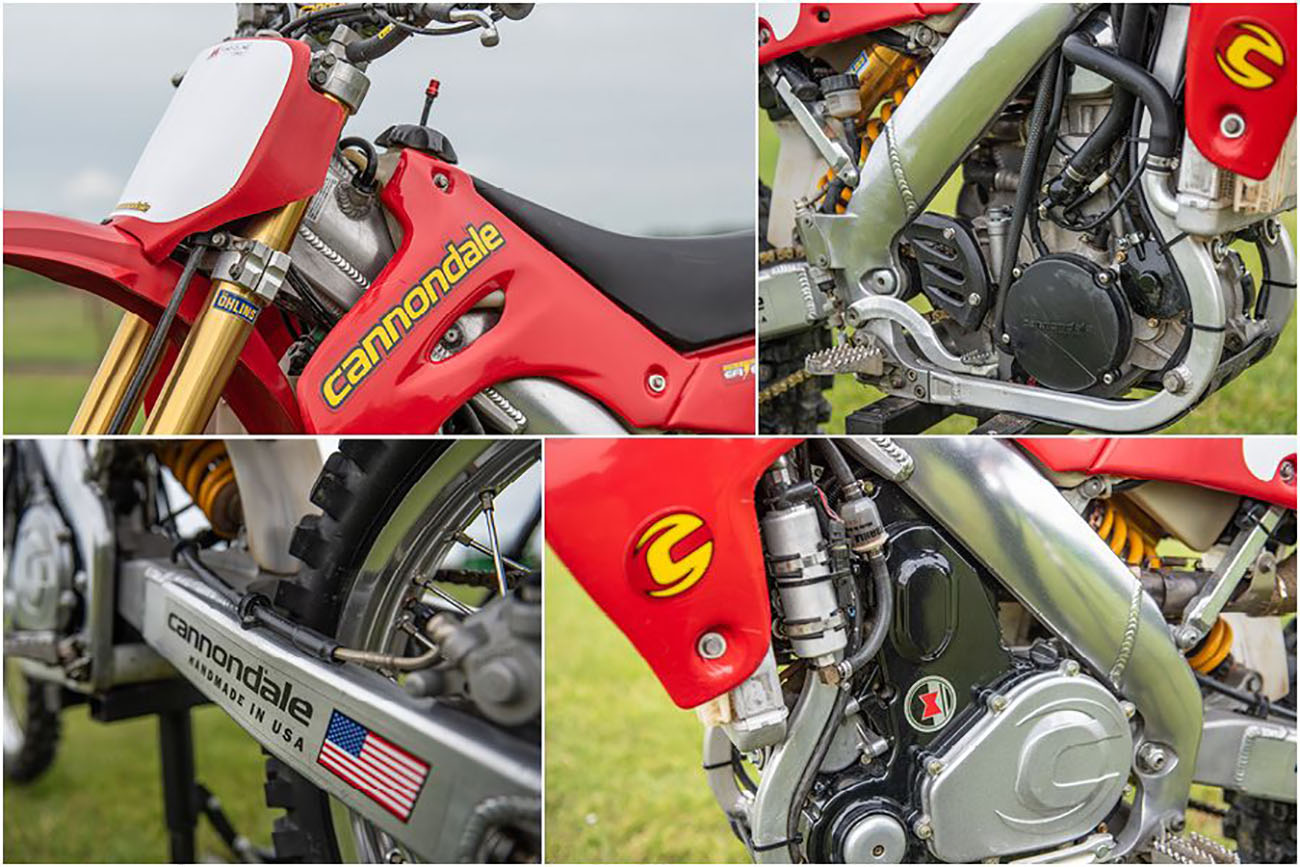
The MX400 Tested…
So we know the MX400 was a weird and wonderful machine that was trying to push the boundaries of a world that hadn’t even been built yet. But what was the thing actually like to ride? Well, thanks to the kindness of Guy Redshaw, who might be the UK’s biggest and most knowledgeable Cannondale fan, we are about to find out!
We met up with Guy and his immaculate example of an MX400 at the awesome Greenfield Dirt Track to take the infamous steed for a spin.
Power
In terms of power I was pleasantly surprised. The power delivery was silky smooth, so enjoyable and inspired a lot of confidence. But that’s probably because it’s slow, very slow. As well as being slower than any of its rivals from the day the MX400 was also way heavier than any of those thumpers from 2001, it was reportedly 20lbs heavier than the YZ426f. So to put it politely the power to weight ratio wasn’t exactly mind boggling. For context the 432cc four stroke motor of the MX400 was outputting a measly 43 BHP on the dyno, whereas a modern YZ450f will be laying down numbers in the mid-50 without breaking a sweat.
The best comparison I can come up with for the power delivery here is to liken it to one of those modern farm bikes like a CRF125. You see guys racing those things at certain specialist events, they are riding the wheels off them, using every bit of power available but not actually going that fast. That’s what it feels like to ride the MX400, and to be honest I found that to be seriously, seriously fun! The magazine testers back in 2001 said that you had to ride this four-stroke like a two-stroke to get the most out of it, and that’s probably why I enjoyed it so much. The power is controllable and easy to manage, which is great when you’re just out having fun at the practice track. Racing would be a different story altogether though. It really would be very frustrating to have even the 125’s out drag you down every straight.
Handling
For me the MX400 handled like a dream, which really did surprise me. I’ve ridden quite a few weird and wonderful bikes in my time and it’s usually the rideability that lets these specimens down. But on board the Cannondale you feel like you’re sat in the bike with that nice comfy seat. I enjoy that old fashioned feeling on these older bikes, you can move forward up to the tank easily as you enter the corners, and the bike feels very planted. As mentioned, the MX400 is a heavy old lump, but that weight has been positioned in the right places to provide a centre of gravity that is quite low, which makes it super easy to turn and position exactly where you want.
Brakes
The main thing that I felt lacked were the brakes. When I first got on the bike I felt like I was going to overshoot every corner, but I soon adjusted to that by using the gearbox to slow the bike down. The engine braking was probably the most severe I’ve ever experienced, if you throttled off the bike pulled back very aggressively, almost like you’d dropped an anchor.
Suspension
In terms of suspension, the track we used (Greenfield Dirt Track in Lincolnshire) wasn’t too rough at all so I didn’t really notice any blatant drawbacks to the high end Ohlins gear. Perhaps the front was a little washy in some of the looser sections, but if you ask me it’s a good suspension set up on this bike. The forks were recently in the safe hands of the guys at Shocktech, so I knew for certain they would be set up properly.
Reliability
If you read the reviews from back in the day it wasn’t necessarily the performance on track that the testers complained about, it was simply the reality of owning one of these bikes that was the big problem. It had weird problems, and lots of them. For starters the Fuel Injection/ ECU system wasn’t very good whatsoever and the electric start was just plain unreliable. Which made the overall MX400 experience a big ol’ pain in the backside.
Thankfully for us though the owner of our test bike (Guy Redshaw) has worked for three years to get this MX400 in a race ready, reliable state. So we didn’t actually experience any of those reliability issues during our test. The only issue I did have was the bike cutting out at low RPM, which was a little annoying. But thankfully the electric start on this bike worked flawlessly, so it wasn’t such a big deal for me. Apparently when they were new the electric start never worked when the bike was hot, but this machine seems to be the opposite. The first start of the day was the most difficult – Guy uses a second booster battery for the first start – but on track the magic button fired the big girl into life every time.
How bad is it really?
This definitely is not the worst motocross bike I’ve ever ridden. I’ve ridden bikes that are far weirder and far more difficult to control. So why does the MX400 have this famously tarnished reputation? And why is it really considered such a failure? Perhaps it’s because it didn’t live up to the insane hype of the time, or maybe it’s because it played its part in sinking the entire Cannondale Empire…
The end of Cannondale
The hype surrounding this bike, which was dubbed ‘The Great American Hope’ was downright insane. A certain American publication genuinely named the MX400 ‘bike of the year’, before the machine was even released and ready to ride. Expectations were high and the promise of groundbreaking technology had dirt bike enthusiasts the world over salivating at the thought of lining up behind the gates on this space-age weapon.
But eventually the first press bikes became available and the truth of owning this temperamental beast began to dawn on the magazine test riders. The reviews that followed were harsh to say the least. By the time the bikes were actually reaching dealers the MX400 already had a fairly bad reputation. With so much riding on the success of the project, this was not good news at all for Cannondale.
It’s said that Cannondale had sunk $80 million or more into this venture, which they originally thought would cost $20 million. When the bikes were received poorly the share prices for Cannondale on the NASDAQ coincidently plummeted. Ultimately this meant that in 2003 Cannondale were forced to file for bankruptcy, and that was the end of the motorcycle project.
The bicycle business was eventually taken over by new owners, and the motorcycle assets were sold to ATK, which is another small American dirt bike brand.
The MX400 had killed the company as the world knew it, and in every sense of the word the bike was a big fat failure. But at the same time a dirt bike legend had been born…

